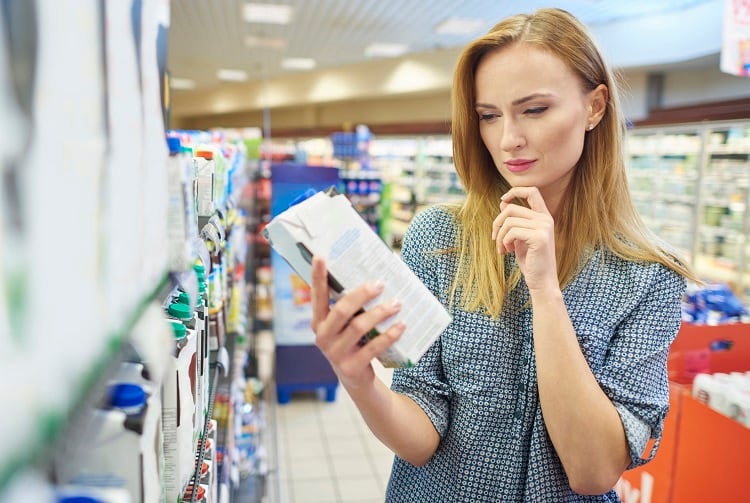Clean label is one of the biggest trends in food, and one that, according to management consulting firm L.E.K Consulting, continues to evolve.
At this year’s Food ingredients Europe (FiE) CONNECT, managing director and partner Rob Wilson said he saw the trend truly come to the fore in 2016, when major international CPGs and restaurant operators committed to ‘going clean label’.
In the food manufacturing space, Kellogg’s and Campbell’s pledged to remove artificial colours and flavours in all their products by 2018, and Mondelēz committed to removing artificial colours and flavours from its CPG brands.
Elsewhere, in foodservice, US-headquartered Panera Bread said it would eliminating all artificial colours, sweeteners, flavours and preservatives by 2016.
However, what consumers originally wanted in clean label is no longer what they are seeking out today. Originally, shoppers showed a preference for fat free, low calorie, low carbohydrate and sugar free claims. More recently, shoppers have displayed a preference for claims such as ‘all natural’, organic, gluten-free, and protein- and antioxidant-rich.
And preferences have changed still, according to Wilson. Consumers now want locally sourced and fair-trade food and drink products with no artificial ingredients or preservatives. Further, they want products that are free from GMOs and antibiotics, he told delegates at the online event.
Focusing on what’s not on the label
So what does a preference for such claims mean for consumers? One of the biggest current trends in clean label is a focus on what’s not on the label, explained Wilson. This, he elaborated, is otherwise known as the ‘no no list’ of ingredients.
In a survey undertaken by L.E.K, around 1600 consumers were asked which claims were the most important to them when buying food and drink products.
Results indicated the most popular claim to be ‘no artificial ingredients’. This was followed by ‘no preservatives’, ‘locally produced/sourced’, and ‘all natural’ – revealing that three out of the top four responses referred to clean label.
Interestingly, one of the lowest scoring claims was ‘clean label’, which Wilson said suggests the term ‘doesn’t really mean anything’ to consumers. “It’s all about what is not in their food that they’re looking for. Clean label is really an industry term.”
Despite being a well-used term amongst ingredients suppliers and manufacturers, L.E.K was unable to find one standard definition. “Generally speaking, it means manufacturers are trying to get chemicals out of their food, [which is] essentially things that consumers can’t pronounce.”
What are today’s consumers looking to avoid?
So which specific ingredients are consumers wanting to steer clear of? While without a definition this may be a challenging question to answer, Wilson pointed to Panera Bread’s trailblazing ‘no no list’ for guidance.
The American chain-store regularly updates this ‘very comprehensive’ list on its website, the managing director explained. The latest edition includes over 18 ingredients Panera says will ‘never be in its pantry’. Some of the better known include aspartame, calcium bromate, high fructose corn syrup (HFCS), maltodextrin, sucralose, titanium dioxide, and synthetic vanillin.
“I would consider [this list] to be one of the leaders, if not the leader, in the industry when it comes to clean label,” said Wilson.
When L.E.K asked consumers which ingredients they aim to avoid when purchasing food, the biggest one was HFCS. Next up, shoppers were wary of artificial sweeteners, followed by sodium, sugar, preservatives, fat, and nitrates. In ninth position, was ‘anything I can’t pronounce’, which similarly points to a preference for clean label.
COVID-19 and clean label
The coronavirus pandemic has also caused the clean label trend to evolve. In a 2020 Health & Food Survey undertaken by the International Food Information Council (IFIC), it was revealed that COVID-19 has impacted eating and food preparation habits for 85% of consumers.
The most popular trend, according to the survey, is that people are cooking at home, snacking, and washing fresh produce more.
The following two, however, indicate a positive impact for clean label: since the coronavirus pandemic hit, people are thinking about food more often than they usually do, and are eating healthier than usual.
The IFIC also sought to determine the top food safety concerns for consumers amid the pandemic.
While the most important concern was found to be foodborne illness from bacteria, the second and third most popular indicate that clean label remains a high priority: food handling/food preparation related to risk of COVID-19 and chemicals in food.
For Wilson, this indicates that “clean label is not something that just gets washed away because of this virus; it is very much a trend that is here to [stay]. Everything we’ve seen is that momentum has certainly continued during this period.”


